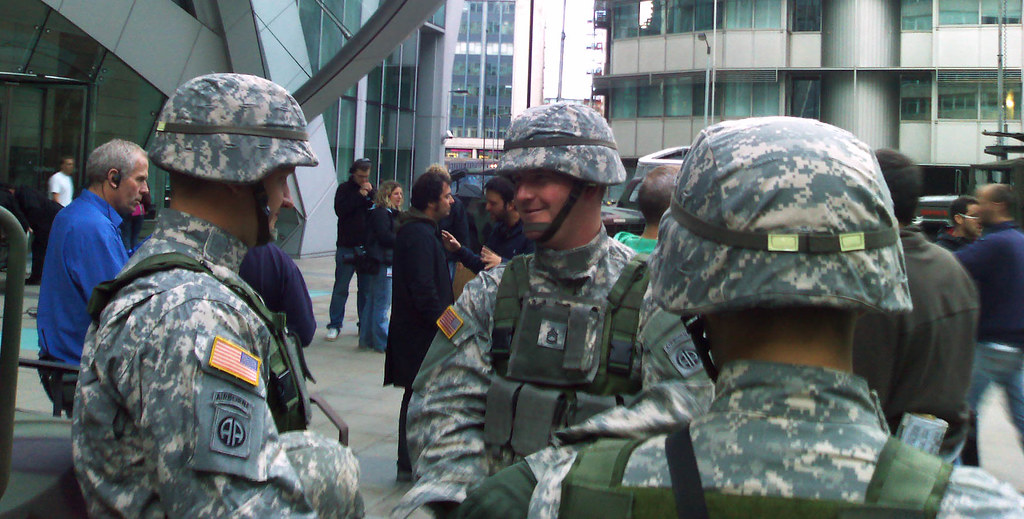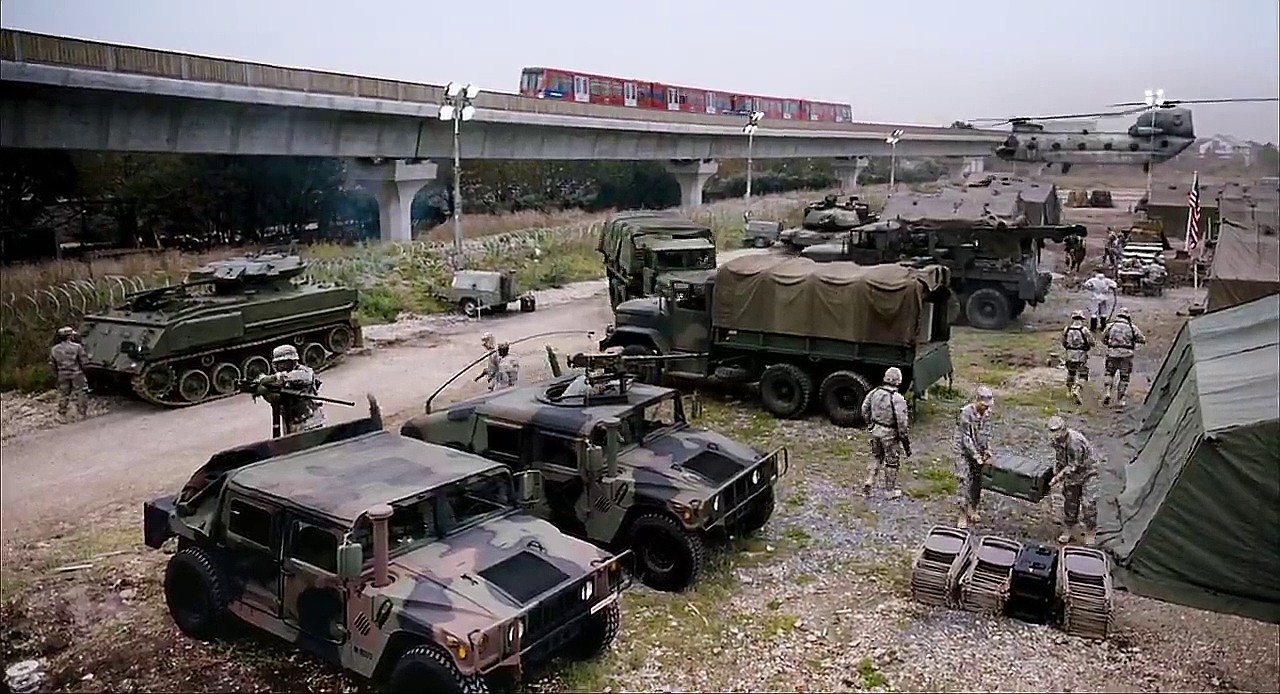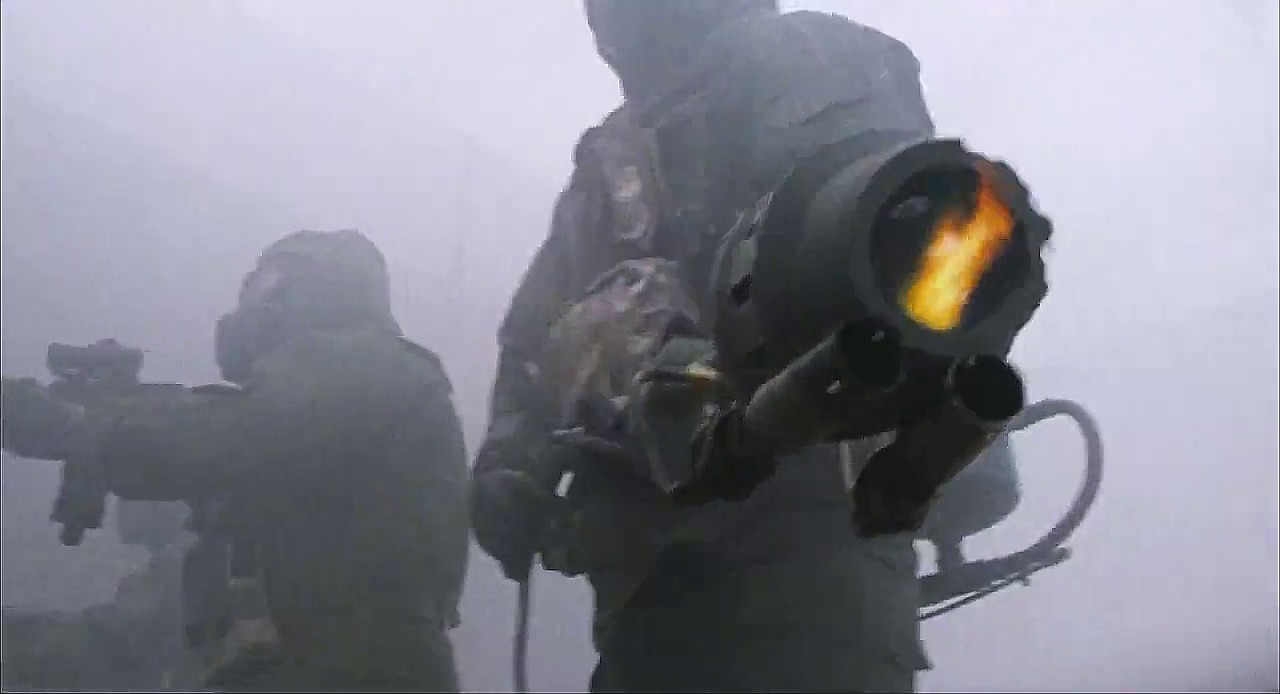The arrest of Kim Jong-un by the People's Liberation Army and disgruntled elements of the North Korean government brought a ceasefire on hostilities on the Korean Peninsula on the dawn of September 5th, 2016. The KPA withdrew back to their side of the border. The provisional DPRK government was in negotiation with the international community relayed via the Swedish and Swiss embassies in Pyongyang on how to move forward from the events. Parts of the negotiations demanded by America was the release of detained American citizens in Pyongyang, including American college student Otto Frederick Warmbier who was detained in the country since January 2nd, 2016. To the the international community's dismay however, reunification would not be possible since the DMZ (specifically the town of Paju which was targeted) has been irradiated following the nuclear attack on Seoul Infected horde.
One month later, on October 2016, roughly 99% of the Infected in the Korean Peninsula were wiped out, either through conventional means, radiation poisoning, or starvation. By mid-October, the ROK Army and U.S. Army entered Seoul for the first time since the outbreak. In there, they were able to rescue survivors still holed up. Roughly 2,500 died more in diseases and starvation. Those that survived were quickly transferred back to Busan for treatment.
With things having settled down in South Korea for a bit, the world then shifted its attention to the 2016 U.S. Presidential Elections. The media was providing both endless coverage of the recovery efforts in South Korea as well as the final Presidential debate of Donald J. Trump and Hillary Clinton. Various political analysts point out that a Trump victory was inevitable since Trump supporters increased at the time of the outbreak, using the outbreak as reason why illegal immigrants and refugees cannot be careless admitted into the United States. In fact, this was mirrored by Trump in his rallies across the nation. The liberal media such as the likes of CNN, MSNBC, The Washington Post, The Huffington Post, The New York Times, and Yahoo News place Trump in an even bad light (which they were doing since 2015), but did nothing to stop the ever growing margin of Trump voters.
On November 4, 2016, the provisional North Korean government released the two American citizens detained in Pyongyang, namely Kim Dong Chul and Otto Warmbier where they flew a chattered plane back to D.C., meeting Vice President Joe Biden and Secretary of State John Kerry upon arrival. It was sign of goodwill from the DPRK that no longer wished to pick a fight with its neighbors. However, the return of the American citizens would become controversial to many as it was just four days before the election.
Then came Election Day as millions of Americans went to the polls to cast their vote. Unlike OTL where it was predicted that Clinton would win, there was no media hype on Clinton winning. So when midnight came, it was no surprise that Republican candidate Donald J. Trump won the elections. Still, thousands filled the streets of many major American cities against the election result despite the clear result. Some were blocking highways while left-wing extremist group known as Antifa and the #BlackLivesMatter movement rioted and destroyed property. However, because of the clear result of the elections, there was no recount.
By December 2016, the South Korea authorities were still investigating the source of the outbreak of the K-Z Virus in the ruins of Seoul. While unable to pinpoint the source, fingers were pointed at the BioTech Corporation, a pharmaceutical company. The CEO himself was at Busan at the time of hiding and went away from the public eye for the past five months. When police raided his home on December 14, 2016, he was found hanging on the ceiling of his house. The corporation's stocks immediately plummeted until the company was seized by the South Korean government.
As 2017 came, the world looked forward to a hopeful new year. On the 20th of January, Trump was inaugurated as the 45th President of the United States on a cloudy Washington, D.C. Friday afternoon. Outside the ceremony, there were countless protesters and Antifa destroying property around the D.C. Metro, resulting in the dozens of arrest of the protesters. Security was also increased, from the ATF, U.S. Marshals, FBI, DHS, USCG, U.S Park Police, Capitol Police, and the D.C. National Guard. They were not taking any chances of the slight possibility of the K-Z Virus suddenly erupting in the nation's capital on the President's inauguration. Due to the behavior of the rioters, the right-wing media labeled the phenomena as "Trump Derangement Syndrome" as anti-Trump sentiment continued among the liberal communities in America. The following day, 2.9 million people attended the Women's March Protest across the U.S. in opposition to Donald Trump's presidency.
As he took office at the Oval, one of Trump's first acts besides withdrawing from the Trans-Pacific Partnership and imposing a 90-day ban from citizens coming from Iraq, Iran, Syria, Libya, Somalia, Sudan, and Yemen was to oversee the vaccine for the K-Z Virus as well as leading the United Nations humanitarian efforts in the Korean Peninsula – a task started by Obama – as part of his foreign policy. The vaccine would see its first clinical trials by February-March 2017, before being declared safe and distributed to the world on April 10th, 2017.
The world was severely affected by the K-Z Virus economically and culturally. China, Japan, Taiwan, and Singapore's economy went on a free fall in those two months of chaos with the loss of a trading partner. The same could be said for Australia and New Zealand which also does trade with the ROK. Comparing to a modern-day Fall of Rome, the effect's ripples were felt around the world. Both the United Kingdom and the European Union took a beating; already intensified since Brexit. Towards the migrant crisis, countries like Greece, Italy, and Poland enforced strict immigration policies. The fear of an epidemic was in the politicians' minds; one inspired from Donald Trump before he became POTUS.
Africa and the Middle East was still a mess. Racked by ISIS, Islamic militants, civil war, famine, and poverty, it would appear these places were better left to rot. Nonetheless, the U.S.-led military campaign against ISIS continued.
Despite the horrors and the chaos, the K-Z Virus epidemic in South Korea brought a light of hope to the international community. The U.S. and West cooperated with China and Russia, whom both sides are always at odds. For once, differences in East Asia were put aside for the common good. The international effort to rebuild the peninsula was slow but steady as the vaccine's distribution relieved the WHO of the resurgence of the virus.
Kim Jong-un would be tried in the Hague by November 11th, 2017, where he was found guilty of all crimes against humanity and the use of a weapon of mass destruction. He was then returned to the ROK by March 3rd, 2018 to serve another sentence. This time however, he was sentence to death by firing squad. The execution took place in Busan and was seen around the world. The Kim Dynasty, while already not the rules of the DPRK, officially came to an end as they were barred from going back into politics again.
In the current situation as of August 2018, the Korean Peninsula would remain divided due to the KPA nuclear attack on Paju that caused the 38th Parallel to become irradiated. Radiation levels still exist to this day. The South was heavily influenced by the U.S., the UK, and the West, while the provisional North Korean government was reliant on the Chinese. Under the observers of the United Nations, the provisional DPRK would begin slowly democratizing and giving freedoms to its citizens, albeit influenced from their backers in Beijing. It was a sign of hope for the oppressed citizens that could now experience liberty for the first time.
Overall, there were an estimated ~7 million deaths in that period from the K-Z Virus outbreak to the Second Korean War, though the exact numbers would never be known. Many more would follow after disease, radiation poisoning, stress, and suicides that followed. To make up for this, the ROK began incentives for repopulation to make for the loss of life.
Despite the challenges faced, the crisis was a victory for the human race as it showed that with cooperation, mankind can emerge victorious. Thoughts of the virus coming back continues to haunt the world to this day, but the vaccine would ultimate prevent that. Armed personnel were stationed at public areas as a precaution. Humanity's victory ultimately came with a heavy cost.
The story of the K-Z Virus ends here but it will continue to resonate for the ages to come.
THE END
*******
Author's Notes:
This ends my Train to Busan timeline. If you have any stories, testimonies, newspaper clippings, headlines, Tweets, Facebook posts, and the like, feel free to add them.
If you have been following this timeline, I thank you a lot. I hope you had fun reading this timeline as it was a challenge for me to write since I was not familiar with the geography of South Korea. Nonetheless, I am proud of how it came out. Please feel free to post comments and criticisms so I can improve this timeline to be better (i.e. grammar, consistency, etc).
With that, I hope you enjoyed reading this.
To more timelines!
- Gillan1220


